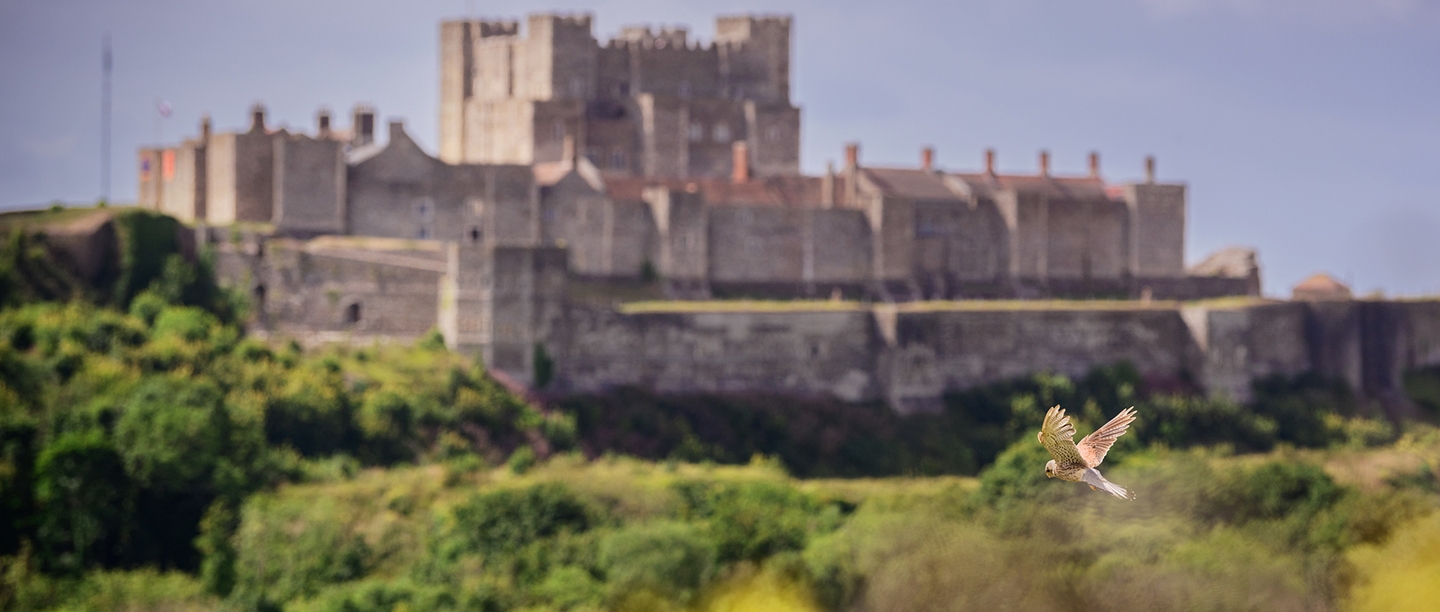Bat Havens
Historic sites, particularly roofed buildings such as Berry Pomeroy Castle, Devon, or Lincoln Bishops’ Palace, Lincolnshire, have become a haven to bats where more traditional roosting spots such as old trees or undisturbed caves have been lost. These buildings have useful nooks and crannies that provide perfect environments for bats – a warm and dry space to breed in the summer, and a cold and humid space to hibernate in the winter. The buildings are also often located near woodlands, parks or gardens which provide ideal landscapes for the bats to forage in.
In England, it is required by law to protect all species of bat, their breeding sites and their roosts. When conserving our historic buildings, we often encounter bat habitats and must ensure that access to these spaces is maintained during and after any conservation work. Maintenance can be a common occurrence at some of our more vulnerable sites, and when any works are planned, a survey is carried out to identify any bat roosts which need to be protected.
Protecting Butterflies
In 2022, Butterfly Conservation reported that 80% of butterflies in the UK have declined in abundance, distribution or both since the 1970s. As butterflies play an important role in our ecosystem both as pollinators and as a food source for other species, their decline can be an early warning for other wildlife losses. By creating more butterfly habitats at our sites such as Down House in Kent, we can protect rare butterflies like the small blue butterfly and play our part in restoring Britain’s precious biodiversity.
The chalk bank at Down House was built in 2021 as part of Brilliant Butterflies, a London-wide project to link chalkland wildflower habitats. It was a collaboration between Butterfly Conservation, The London Wildlife Trust and The Natural History Museum, and was funded by The People’s Postcode Lottery. In Darwin’s time, the chalk downland around Down House was far more extensive than it is now, and butterflies could be seen in much greater numbers. Darwin was particularly interested in the role that butterflies and moths played in the fertilisation of orchids, which were also once common in the area.
Reintroducing Choughs
The red-billed chough is a striking bird and rare member of the crow family. It is recognisable by its black plumage, red legs and red beak. Legend has it that the species originally got its colouring by walking in the blood of Thomas Becket as the archbishop lay dying in Canterbury Cathedral. The birds were a common sight in Kent at the time that Dover Castle’s defences were first built in the 12th century but have been extinct in the area for more than 200 years due to changing farming practices and persecution.
We’ve been working with Wildwood Trust and Kent Wildlife Trust to support the reintroduction of the chough at Dover. The birds were released in the area during the summer of 2023, and to widen public understanding and appreciation of the birds, a temporary aviary opened at the castle housing four young red-billed choughs. It allowed the public to learn more about the choughs’ historic links to the area and their ecological significance.
This also marks the start of a wider project to introduce choughs into the wild in Kent in 2024.
Enhancing Grasslands
Grasslands provide diverse havens for wildlife and can be found throughout the UK from pasture to meadows, woodland glades to recreational fields. Though grasslands are prevalent here, semi-natural grasslands which have not been ploughed, reseeded or heavily fertilised are very scarce and under threat from agricultural improvement or heavy recreational use. These grasslands are particularly important for supporting a wide range of plants and animals.
In 2022, English Heritage started a joint project with Buglife to improve the grasslands at Berwick-upon Tweed Ramparts and Castle in Northumberland – the site of one of Buglife’s ‘B-Lines’ insect pathways. B-Lines are insect pathways crisscrossing the UK which provide important pollinators like bees with wildflower-rich stepping stones. The project will benefit many species, particularly the northern brown argus butterfly (Aricia artaxerxes) which was identified as being of high importance under the Natural Environment and Rural Communities Act (2006).
Meadows
Meadows are a form of grassland that is maintained by traditional farming methods. The grass is left uncut and ungrazed during the spring and early summer to produce a hay crop, and then may be grazed after the hay is cut, until the ground becomes too wet. Meadows in the UK have come under threat with 97% of this habitat lost in Britain since the Second World War. We’ve been working hard to create new wildflower meadows and to conserve and enhance our existing meadows, many of which form important historic settings for our sites such as Down House in Kent and Osborne on the Isle of Wight. In 2023 we pledged to enhance and create 100 meadows at our sites in partnership with Plantlife.
-
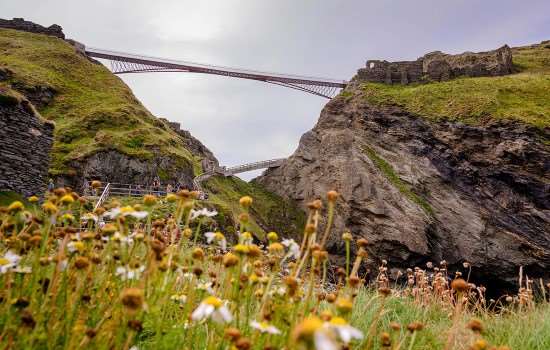
HISTORY OF MEADOWS
Find out how meadows have been a constant and valuable part of agricultural and social history, and provide important historic settings for many of our sites.
-
Meadow Conservation
Find out how meadows support a range of species, including many butterflies, and discover what English Heritage is doing to preserve them.
-
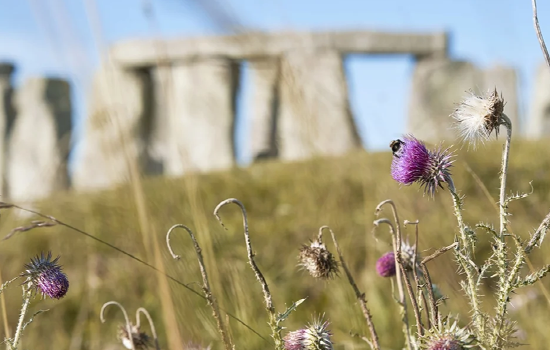
100 Meadows
To celebrate the recent coronation of His Majesty King Charles III, we will enhance and create one hundred meadows at our castles and abbeys, prehistoric stone circles and palaces.
Recognising History
Some animals have important historical links to our sites and can still be seen there today. Sheep, cows and pigs were farmed at Boscobel House in Shropshire during the early 19th century when the house was part of a mixed farm (both crops were grown and animals were farmed). It would later become a dairy farm. Today, English Heritage cares for local and rare breed farm animals at Boscobel as a nod to this part of the house’s history. Breeds include Tamworth pigs and Ryeland sheep, both some of the oldest breeds found in the UK. It is believed that after Queen Elizabeth I was presented with a pair of Ryeland wool stockings, she swore she would only wear clothes made of Ryeland wool. You can also see Shropshire sheep at Boscobel – the oldest registered pedigree breed in the UK. They were very popular in the 19th century because of their big dense fleece and strong build.
At Carisbrooke Castle on the Isle of Wight, donkeys have formed part of the castle’s history for hundreds of years. They fulfilled the important role of drawing up the water from the 16th-century well-house which was once the main water supply for the castle. Today at Carisbrooke, the stables are home to six donkeys who graze on the five-acre field behind the castle. They no longer have to ‘work the wheel’ as they would have in the 16th century, but they do sometimes perform short demonstrations of the well-house wheel for visitors, though they never turn the wheel more than twice per demonstration.
Meet the Carisbrooke DonkeysMonitoring at Kenwood
At Kenwood in London, there is a history of monitoring the wildlife on the estate and the surrounding green space (Hampstead Heath). This landscape provides habitats for many different birds, mammals, reptiles and insects. The woods around Kenwood House, known as North Wood and Ken Wood, along with the Sphagnum Bog in the Kenwood west meadow, are designated as Sites of Special Scientific Interest.
Monitoring of the wildlife at Kenwood has been organised by a number of different groups over the years. Their work has helped us learn more about the wildlife of the area as well as identify potential threats to the biodiversity and key sites for conservation, while managing the estate. Heath Hands is an organisation run by volunteers that works in partnership with English Heritage and the City of London Corporation to help conserve Hampstead Heath. Every year in spring and autumn, volunteers from Heath Hands run surveys of the snake, butterfly and dragonfly populations, identifying habitat sites at Kenwood for protection.
Kenwood is home to a distinctive bird population including London’s largest colony of jackdaws. The landscape is particularly favourable to birds due to its seclusion and the presence of many ancient hollow trees which are ideal for nesting. Bird monitoring is important for understanding more about key nesting sites for the different bird populations. Over the years, surveys have been provided informally by local birdwatching groups and formally by the Heath and Hampstead Society, which have helped guide our landscape management at Kenwood.
A Mutual Benefit
Protecting or conserving nature is an essential consideration when managing our historic sites, and in turn nature can also help us with our work. For example, the sheep that graze at Dover Castle help prevent tree growth on the earthworks. This protects historic features underground from damage by tree roots and helps reduce the amount of ivy reaching the castle’s stone walls.
Soft-capping is one way in which we can protect some of our most vulnerable ruined buildings. This is the placing of soil and turf on the tops of the exposed walls in order to protect the wall from damaging water ingress. There is a mutual benefit in using soft-capping as the vegetation can provide a valuable, flower-rich habitat and food source for invertebrates and birds, while also protecting the historic walls. We have used soft-capping on a number of our sites including Hailes Abbey in Gloucestershire, Lincoln Bishops’ Palace in Lincolnshire, Wigmore Castle in Herefordshire, and Shap Abbey in Cumbria.
Explore more
-
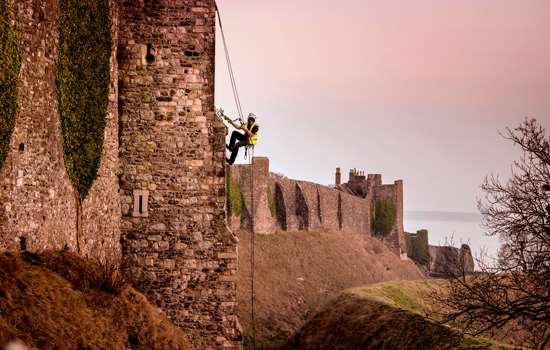
Sustainability
The climate and ecological crises are two of the biggest challenges facing our historic sites. Find out how we are reducing our environmental impact.
-
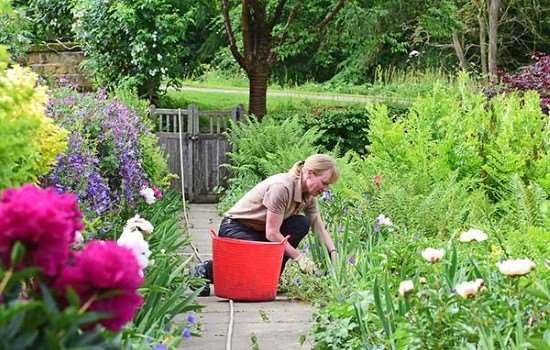
Conservation of our Gardens
Learn about some of the different aspects of our gardens conservation work and explore our most recent and ongoing projects.
-
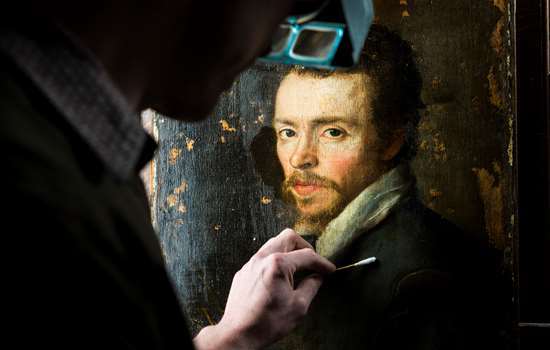
Paintings Conservation
Discover how dedicated fine art conservators protect the many paintings, frames and decorative schemes in our collection.
-
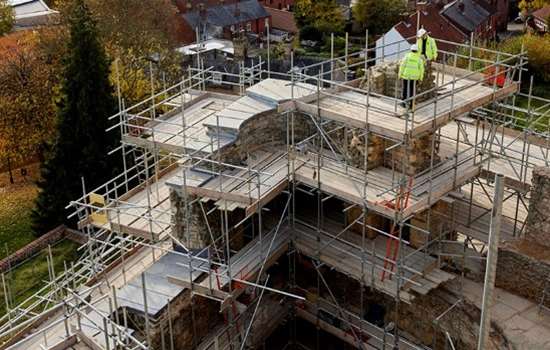
Buildings Conservation
Learn more about some of the techniques we use to care for our buildings, and explore some of the unique projects we’ve carried out in recent years.

